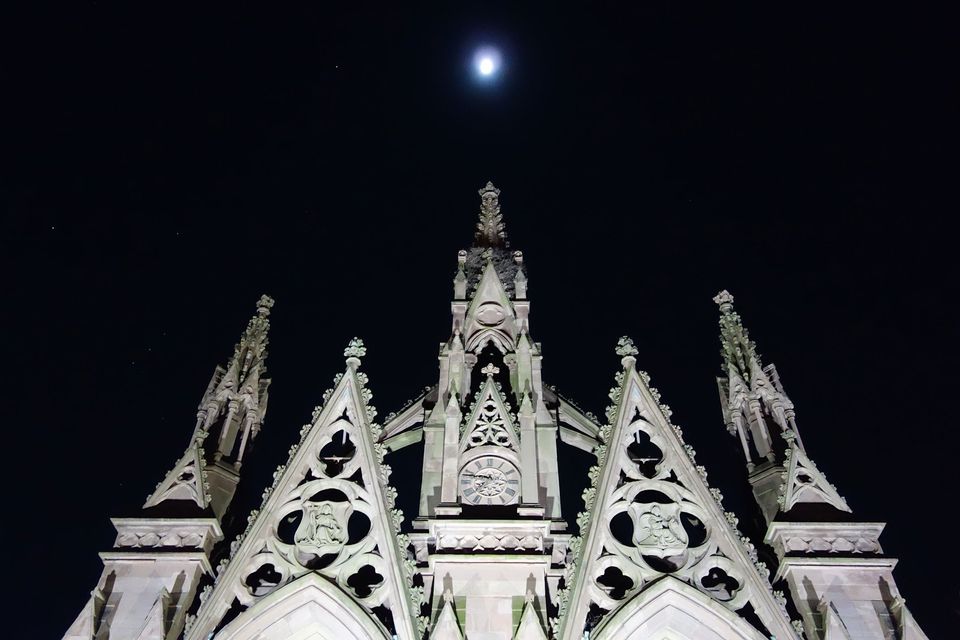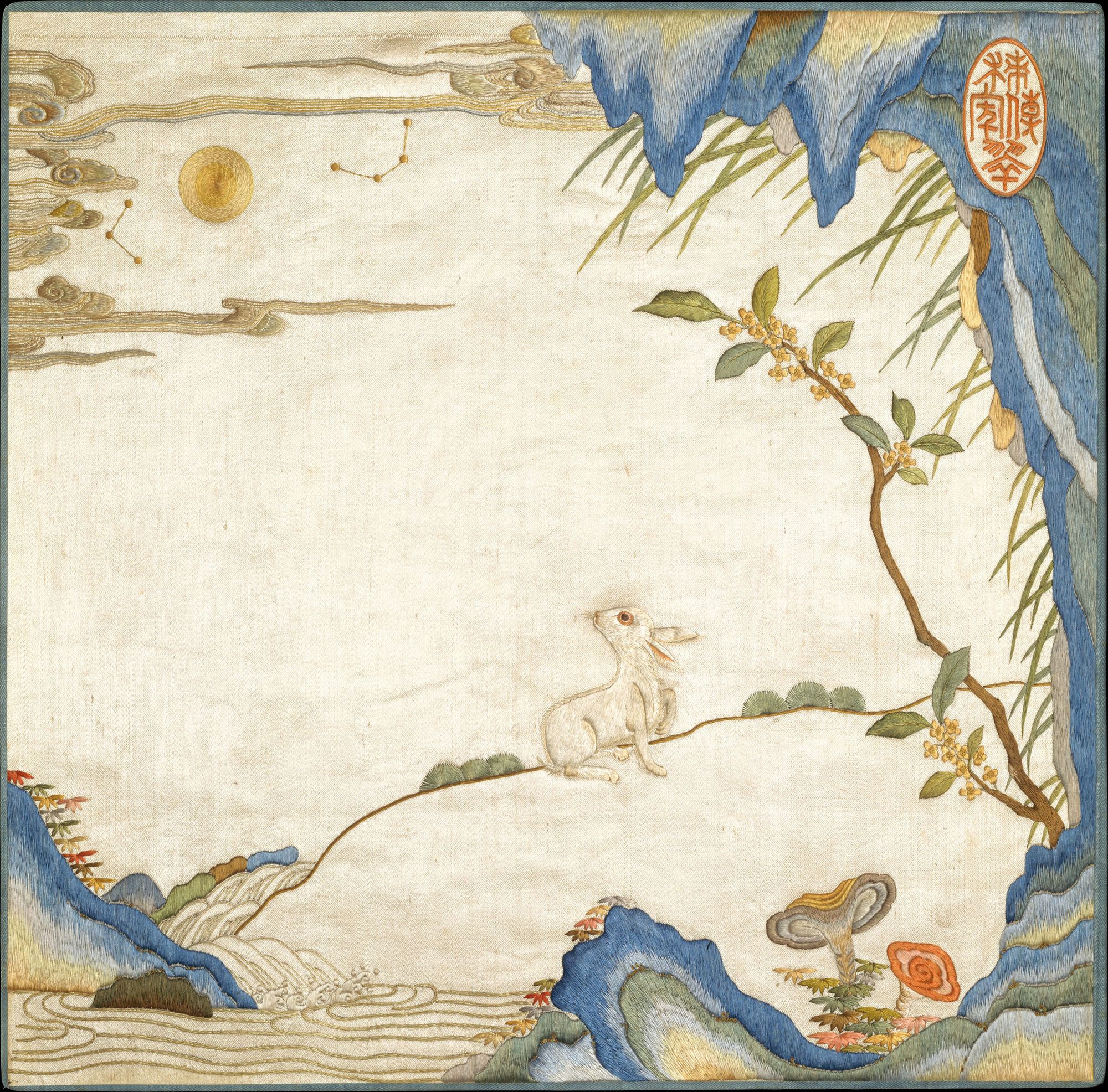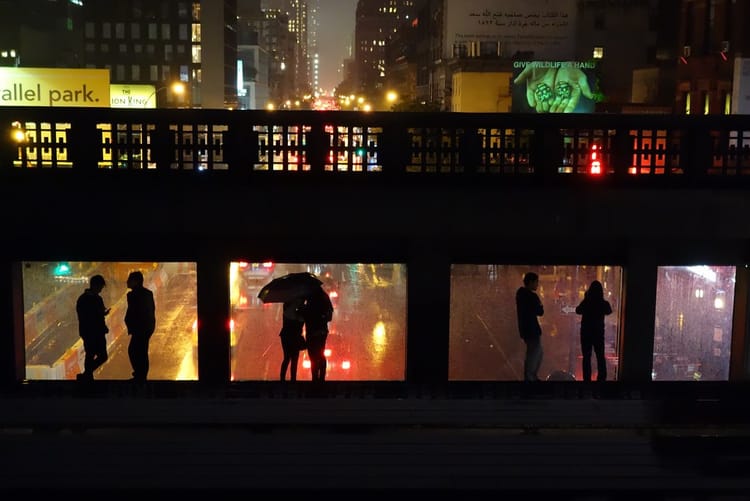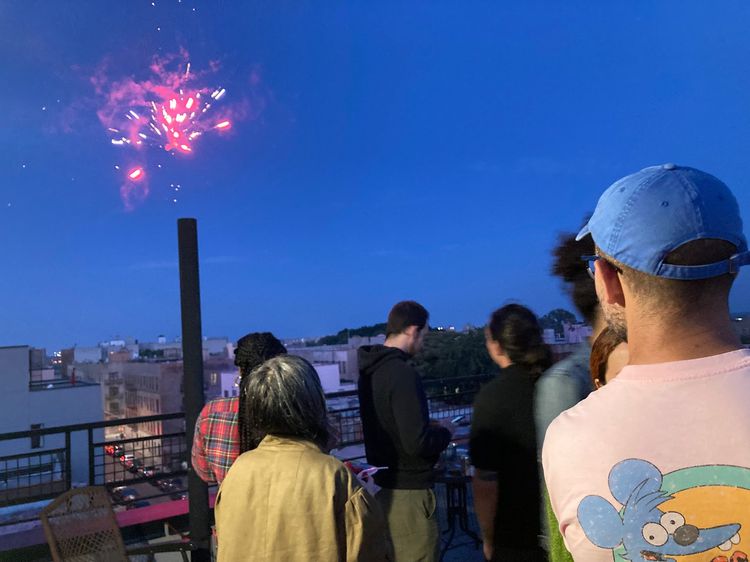Worm Moon Rising

Tonight, as the sun sets in the west, find a perch on a rooftop, high subway platform, or vantage point in Lower Manhattan and watch as the full moon rises in the east. This is a momentous time just before the spring equinox on March 20; the darkness of winter is receding, and the rebirth of nature will soon kick into high gear. And the worms will emerge from their hiding places.
This is sometimes called the Worm Moon, a name folklorically attributed to the Algonquin Indigenous people. However, it has been largely popularized through its use in The Old Farmer’s Almanac that started in the 1930s, referencing how larvae wriggle out from the tree trunks when the cold loosens its grip. It has been in use in the New York City area for at least a century, with the August 25, 1912, Brooklyn Daily Eagle citing the Worm Moon as heralding the time in March when “the worms quit their retreat in the bark of trees.”
The now-digital Old Farmer’s Almanac notes that the name can be traced back to the 1760s, when “Captain Jonathan Carver visited the Naudowessie (Dakota) and other Native American tribes” and reportedly recorded the Worm Moon name. As opposed to in Europe, where the names for the moon largely referenced the gods of Roman mythology, in North America, Indigenous people have long named the full moons in response to the seasons. ICT reports that the Diné name for the March full moon is “Wóózhch'ííd,” an onomatopoeia for the first screech of eaglets; the Oneida name is “The Day Is Cut in Two” for the even division of night and day; and among the Dakota names is “Sore Eyes Moon” for how the brightness of the snow exhausts vision.
Gordon Johnston, a longtime NASA program executive who moonlights as a moon names hobbyist, writes on the NASA Solar System Exploration site that his own suggestion for a good March moon name responding to current phenomena would be the Pothole Moon (and we would agree). He adds that the Worm Moon likely would not have made sense as a precolonial name in the northeast, as the forests did not have native earthworms and most are in fact invasive species that originated in Europe and Asia. Out of New York State’s around 30 earthworm species, only five are North American natives. One of the squirming invaders is the Asian jumping worm, which has the alarming nickname “crazy worm” for its erratic movement and is becoming prevalent in Upstate New York.
Even after this relatively mild New York City winter, you might be feeling reclusive and sun-deprived. Celebrate the rising Worm Moon by stepping out into the street from your own cold-weather hiding place. Move your body, shake your limbs, maybe create a serpentine dance. Hail the dawn of spring with a wriggling rite.

- It’s the Year of the Rabbit, with Lunar New Year recently celebrated in Chinese communities around NYC. 2023’s Chinese zodiac animal has a special connection with the moon, as the jade hare in folklore is a companion of the Moon goddess Chang'e, helping to make cakes and the elixir of life. Stop by the Metropolitan Museum of Art through February 4, 2024, to witness depictions of the rabbit in Chinese art, including this exquisite 18th-century silk embroidery of a rabbit gazing wide-eyed at the full moon.
- The tiny Oyster Island, just half-a-mile southwest of the Statue of Liberty, is more commonly mapped as an underwater hazard than a landmass as it is almost always submerged, except when the moon is full and close. In 2021, the New Yorker reported on a trip to the island during its brief emergence, a visit ending with an inundation that “happens fast, or faster than you’d think, even when you are expecting it.”
- From 2018 to 2019, artist Heidi Neilson installed an arrow in locations around New York City that pointed at the moon. In a place where it’s sometimes hard to perceive the stars through light pollution and towering buildings, “Moon Arrow” connected viewers to the sky and reminded them that they live in a tidal estuary constantly being influenced by the moon’s orbit.




